LG G4 vs Samsung Galaxy S6
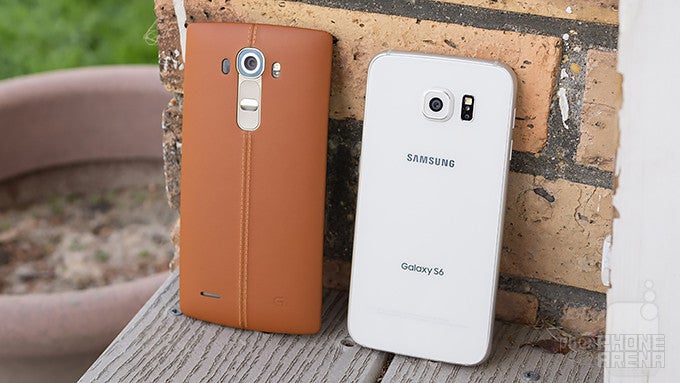
Introduction
With Pantech gone, South Korea is left with just two notable smartphone manufacturers — LG and Samsung. Many of you will know that the cross-town rivalry between the two has been going on for a long time, as the two chaebols regularly clash in a number of industries, most notably smartphones.
Whether as a function of size — LG is half as big as its competitor — or strategy and talent, Samsung has consistently outdone the former in terms of phone sales. But while volumes are indicative of financial success, it doesn't mean that Samsung necessarily has the better handset at every corner. That, at least, is the way we approach this or any other comparison.
With the Galaxy S6, Samsung had a ton to prove. Not only are sales slumping, but consumers have been consistently questioning the company's design choices and heavy software. It took a decisive step forward with the S6, though, addressing both these overarching concerns. LG, too, has been keeping itself busy, for the G4 has also addressed similar issues and put a greater-than-ever emphasis on camera performance and screen quality.
Which one, if either, has the upper hand, then? This will be a real tough one, so continue on reading and don't skim through!
Design
Retro-chic leather, or the slightly colder embrace of modernistic metal-and-glass?
We probably will never know for sure whether LG had it planned all along or was simply responding to a more premium Galaxy S flagship, but it definitely upped its game with the G4. Sure, the 'normal' model still has a plastic bod (with an off-beat, diamond pattern at the back, mind you), but the more premium, leather version is definitely up to snuff and a very adequate answer to the S6.
Speaking of Samsung's new flagship, the company has heard consumers' feedback, and has encased the S6 within a glass-and-metal body for an added appeal. The combination ensures both a desirable exterior and a pleasurable grip.
Turning to ergonomics, there's no contest — being the considerably smaller device, the Galaxy S6 is easily the more comfortable phone to use single-handedly. This is mostly attributable to the G4's larger screen, which we'll touch on in a bit, though the fact that LG's new flagship is actually bulkier than its predecessor is not helping matters, either. The most shocking difference between the two heavy hitters, however, is thickness — the Galaxy S6 is significantly thinner than the G4.
The G4 is not without its merits, though. Sure, it is larger, and sure, it is thicker, but that doesn't mean that it's uncomfortable to hold — its curved back helps with that — nor does it make essential controls, such as the volume rocker, any harder to access.
In the end, these are 'only' the facts. It's up to you to decide which one is more in tune with your own design tastes, though we have to admit that we're pretty much split and don't have an absolute favorite between the two.
Display
Empty promises from LG — the G4's screen is far from perfect, especially when compared with the Galaxy S6's.
Both companies decided to stick to their guns, and refused to tweak the size of the display panels they chose for their respective flagships. So, like with the Galaxy S5 and LG G3 last year, we again have a 5.1-inch screen facing a larger, 5.5-inch unit. There's only one change here — Samsung upped the ante and ushered the Galaxy S6 into the Quad HD resolution club, where it'll keep the G4 company. The two configs work out to a pixel pitch of 577 ppi for the Galaxy S6 and 538 ppi for the LG G4. It's more than you really need.
But you could have gathered as much by just looking at the specs sheet of both devices. So what about the actual quality of the two panels?
With the G4, LG wanted to impress upon us the myriad of improvements that its new, 'Quantum Display' IPS screen brings to the table, including higher contrast and brightness, and better color quality. Of course, we seldom have a flagship announcement that isn't accompanied by such claims. The real thing, however, doesn't always live up to these promises, and the G4 is a good example.
For starters, LG's flagship features a screen that is overly cold (bluish-looking whites and grays), with a measured color temperature of 8000K. Compare that with the almost perfect, 6600K temperature of the Galaxy S6's Super AMOLED panel in its most color-accurate 'Basic' mode (6500K is optimal). This disparity extends to color reproduction, as well — the 5.5-incher of the G4 is consistently off target with the hues it renders, and colors such as red and green are visibly over-saturated at higher intensities. In contrast, the Galaxy S6 tends to stick to the sRGB color space and isn't a victim of as significant color errors.
Moving on, the Galaxy S6 is also ahead in terms of brightness output, with a measured luminance of 563 nits, which is a great figure. Meanwhile, the G4 peaks at 454, which is still decent, but chances are the coming summer will be harsher on G4 owners. As for minimum brightness, the two are tied at the excellent 2 nits, which will be appreciated by night owls.
Interface and features
Material Design seen throughout, welcome reduction in weight with TouchWiz, but not UX 4.0.
Aesthetically and functionally, little about LG's custom interface (now dubbed UX 4.0) changed from what we had with the G3. We're again looking at the same, flat approach to design, though the company isn't running off in its own direction, and is keeping close to Google's established Material Design guidelines.
Samsung went down a similar path with the new TouchWiz overlay of the Galaxy S6, though there are some very important differences here. For starters, while the design is, again, mostly unchanged with the exception of being in conformance with Lollipop's style, the software has been genuinely trimmed down and simplified. It feels lighter, and some of the gimmicks were axed, though signature features like MultiWindow (LG has its own Dual Window, allowing two apps to be run side-by-side) and Smart Stay (Smart Screen with LG; keeps the display on whilst you're looking at it) are still available.
Both devices also have their respective takes on 'mini apps', and even the now-trending theming with a dedicated store that will let you download pre-made themes that change the way your device looks — sometimes significantly. One feature the LG G4 retains from its predecessor is double-tap-to-wake (Knock On), which we've always had a thing for, and Knock Code, which allows you to set a pattern of knocks that will then be used to unlock the device. Fancy as it may sound, we have to point out that Samsung's Galaxy S6 is more than decently secure itself, thanks to its fingerprint scanner. Further still, while previous Galaxy devices relied on 'swipe' type scanners, the Galaxy S6 has made the move to the much better, hassle-free touch type, and it works splendidly.
Processor and memory
On Samung's end, we're looking at an equally intriguing decision. The Galaxy S6 maker dumped Qualcomm —this year for all its S6 units— and instead picked its own octa-core Exynos 7420 processor with Mali-T760 GPU. Built on a 14nm process, this is the smallest chipset on the market, and one of the most powerful. Benchmarks certainly agree that it outdoes the LG G4's SD808 in terms of raw computing might and graphics performance, and this is also noticeable in day-to-day usage.
Indeed, whether because LG's skin is still on the heavy side, or because Samsung's own was well optimized this time around, or even because it has a more powerful processor, the Galaxy S6 just feels snappier in daily operation, though the difference isn't that big.
Other components also helped Samsung's new flagship with speed. The UFS 2.0 internal storage of the S6, for example, which comes in 32GB/64GB/128GB capacities, is the fastest we've seen, though you can't expand upon it like you do with the LG G4's. Unfortunately for Samsung's rival, its own flagship only comes with a 32GB option. Lastly, RAM too plays a part — the Galaxy S6 is making use of 3GB of LPDDR4 memory, while the G4's Snapdragon 808 limits it to 3GB of the older (and slower) LPDDR3 type.
In all, if speed and fluidity of navigation is your number one priority, then you have it the easiest — get the Galaxy S6.
Internet and connectivity
A full stack. With some discrepancies.
Answering for your browsing need is Google's Chrome on the LG G4 — the company ditched its own browser — while Samsung has included both its home-cooked solution and Chrome. In any case, browsing on these two flagships is a breeze, and no nasty scrolling stutters rear their ugly head with either, so expect smooth sailing.
A similar parity exists when thinking connectivity features, though there are some discrepancies. For example, while both devices have support for LTE, Bluetooth 4.1, 5GHz Wi-Fi, NFC, and even have an infrared blaster for remote control over home electronics, Samsung has actually dropped video-out technologies like MHL this time around. In comparison, the G4 supports both MHL and the rival SlimPort standard. In a world where wireless streaming is becoming more and more ubiquitous, this may feel like a small triumph for LG's G4, but it's an important consideration if you're already invested in accessories that allow wired connection.
Camera
You're looking at one of the very best cameraphones on the planet right now; the G4 impresses with low-light performance.
LG and Samsung both have a rich history of only putting the very best in terms of camera sensors and optics in their flagships, and we are happy to note that neither deviated from the path this time around, too.
Starting with the LG, the company used a 16-megapixel, 1/2.6” Sony IMX234 sensor, complete with very wide, f/1.8 lens, an LED flash, an ambient light sensor (determines the source of light and tweaks white balance accordingly), and a laser auto focus system. As for Samsung, we're again looking at 16-megapixel, 1/2.6” Sony sensor, but the IMX240 model, complemented by an LED flash and phase detection auto focus wizardry. To top it all off, both companies implemented an OIS gizmo for shake-free video and better stills with the main camera. Lastly, for all your selfie needs, you're looking at an 8-megapixel front-facing camera with the G4, and a less generous, 5-megapixel one with the Galaxy S6.
On the software side, we have an equally impressive development, as both LG and Samsung have refreshed their existing interfaces, but in different ways. In LG's case, it added some much needed features, like manual mode, which lets you take the reigns and control variables such as white balance, ISO, focus, and most impressively — shutter speed (a rarity even today). The Galaxy S6 also has a brand-new 'Pro' mode, which gives you access to these same controls, bar shutter speed. Both also tout a new quick way to get to the camera, even from a locked state. In Samsung's case, it's a quick double press of the home key, while LG has gone for a double click of the rear-mounted volume down key. Further still, while the S6's shortcut simply launches the camera, the G4 enjoys some extra functionality, as the preset also focuses and snaps a quick image.
On paper, the G4's gear sounds more impressive, but we know better than to base our conclusion on just specs. Indeed, looking at image quality in daylight, we can hardly give the edge to the G4 — for the most part, the two snappers produce equally competitive stills that are well-exposed, rich in detail, and true to life. LG's snapper has a non trivial issue, however — images come out with blurry edges, a problem the S6 does not have. As for panoramas, LG went completely nuts, for the G4 can capture some 76-megapixel monstrosities, while the Galaxy S6 is limited to about 28-megapixels. In reality, Samsung's approach makes sense — the S6's panoramas are already crazy detailed, but if you're into this medium, you'll appreciate LG's efforts. Both solutions work rather flawlessly and are good at stitching and exposure correction in trickier compositions.
Similarly, indoor shots are quite comparable between the two, with only tiny wins for either here and there — the Galaxy S6, for example, seems better at ensuring that all images are focused properly, while the G4 churns out a teeny bit more detail. Unfortunately for the LG camp, as soon as flash becomes mandatory, it performs miserably in comparison — unlike the Galaxy S6's shots, the G4's come out poorly illuminated and with sickly, yellowing colors.
You'd think that the Galaxy S6 has this in the bag at this point, but you'd be skipping ahead, for the LG G4 is an amazing low-light performer. Not only are its photos better focused and plentiful of detail, but anti-noise algorithms smooth over the image with surgical precision — even when it's shooting at higher ISO than the S6. This puts the G4 in an awkward position, as it's definitely superior during the night, but its disappointing flash forces us to refrain from crowning it the ultimate Android low-light camera.
Turning to video, we find little reason to be disappointed with either, though it's irksome that LG decided not to make continuous focus the default option — you have to touch to focus instead, and only then do you get the option to start continuous focus. We're spared this annoyance with the Galaxy S6. In terms of capabilities, we're looking at 1080p video capture at 30 framers per second (FPS) with both, though only the S6 can do 1080p at 60 FPS (the G4 does 720p @ 60FPS, and it's horrible). We also have the now flagship mandatory, 4K UHD video capture at 30FPS mode with both, and the results with it — and most other shooting modes — are top notch. We're calling tie here.
Multimedia
Deafening speaker there, LG!
If there's one thing both LG and Samsung have always done a great job of, it's the built-in multimedia apps stack. Not only are the default apps more than sufficient for the majority of potential users, but they can even satisfy some niche uses and keep you firmly entrenched in Samsung/LG land.
Starting with the Gallery, it's worth pointing out that Samsung has simplified the interface, both from a functional and design standpoint, and it feels airier than ever. In comparison, LG's is a more modernistic (rather than minimalist) take on the format, and we find little reason to dislike it, either. This approach is consistent across the rest of the group, including the Music and Video players.
Speaking of video, both devices have extra features that make consumption more pleasurable. For example, you can lock the screen to accidental touches with both, and you can also even pop out the player and put it into a smaller, overlaid window that follows you throughout the interface. The sound coming out of the speakers of both devices is more than adequate, too, though the G4's peak of 79 dB exceeds that of the S6's (73.7 dB).
Call quality
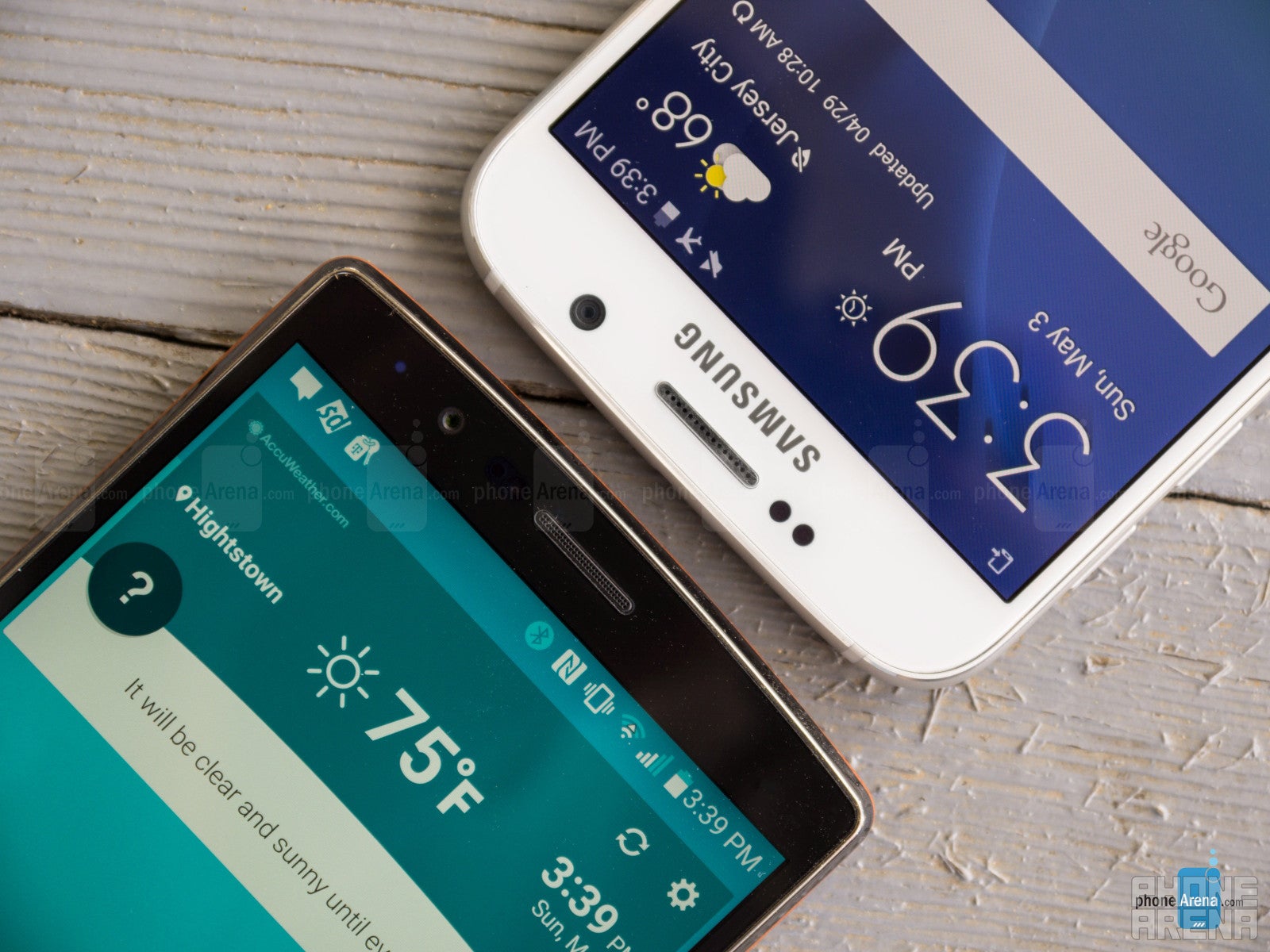
For what it's worth, neither of these two will disappoint, and unless you're coming down from a really great phone, you likely won't find their performance worth being disappointed over. Indeed, both devices have audible earpieces, and the other side will even hear you slightly better, but don't expect crystal clear, distortion- and artifact-free voices to ring through the line.
Battery life
While Samsung's devices never really were chart-toppers when it came to battery longevity, it's fair to say that they consistently did pretty well. On LG's end, things went a little different ever since it warmed up to the idea of using Quad HD screens — the LG G3, for example, had a pretty underwhelming showing at our custom battery test, managing the average 6 hours and 14 minutes.
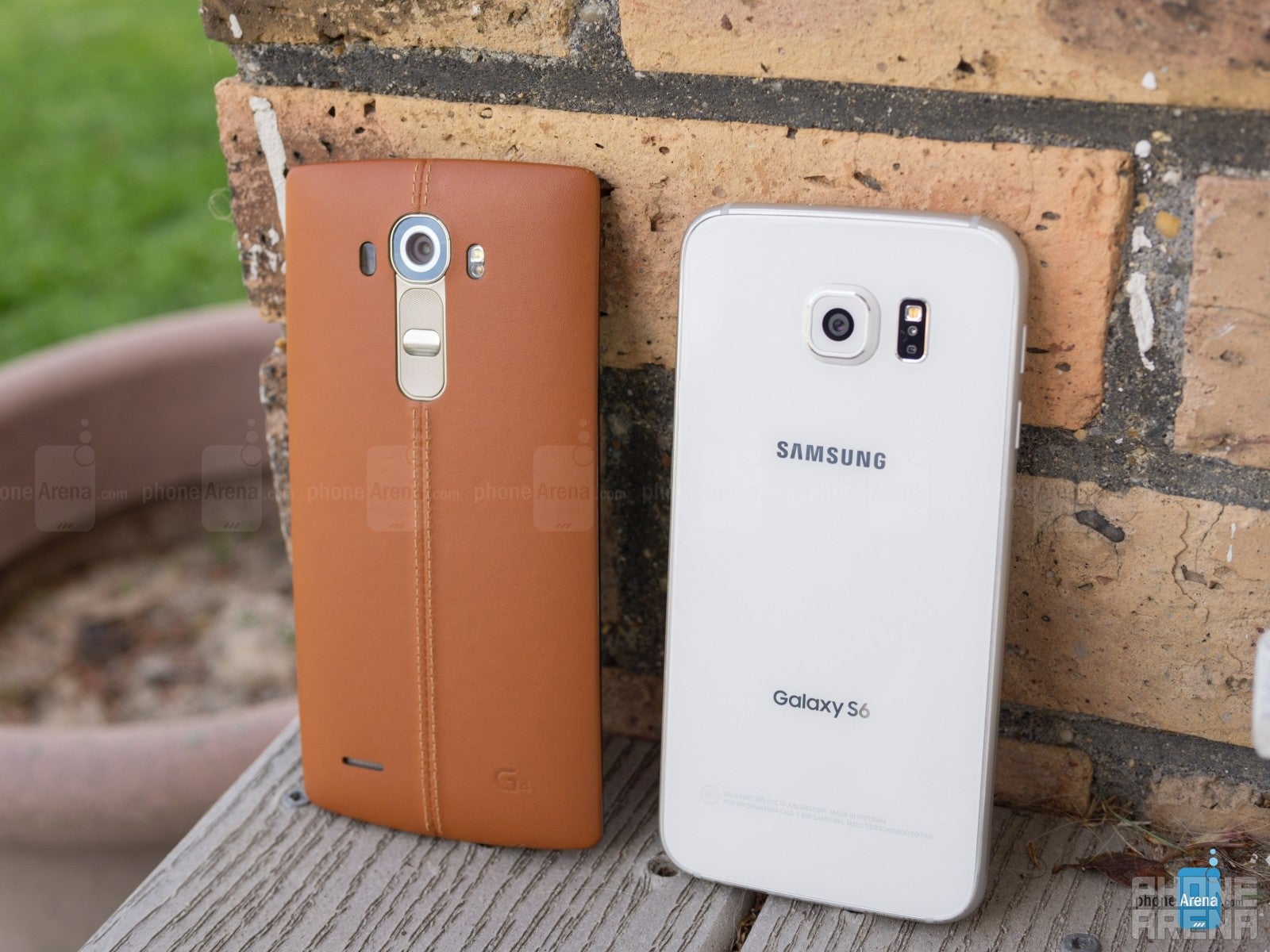
Given its considerably smaller, 2,550 mAh cell, you'd expect the Galaxy S6 to bomb on the test even more spectacularly. Instead, Samsung's skinny flagship managed the decent 7 hours and 14 minutes, putting an hour (and then some) worth of distance between itself and its neighborhood rival.
The Galaxy S6 also does better when, inevitably, it's time to put it down to rest for a recharge. We clocked just 78 minutes for the cell to go from dead to 100%, which is far more impressive than the loitering G4's 127 minutes.
Conclusion
If you kept score, you'd know which way we're leaning right now — the Galaxy S6 snagged more wins on the way, big or small, earning itself a lead on the G4. This doesn't come without a lengthy, maybe even patronizing disclaimer, that makes it sufficiently clear that you should try and identify the things you care about instead of following along blindly. This means deciding whether you want a phablet-sized phone, or one that is easier to handle. It means asking yourself if that extra frame or two when gaming will really make a difference. It means finding out whether metal-and-glass designs are your thing, or whether you prefer the warm touch of leather instead.
We opened this stating that this is a tough matchup, and at the end, we're still convinced — it's hard to reach an objective conclusion as to which one is better. Sure, gun-to-our-head, we'd shout “the Galaxy S6!”, but again, that would rob you of the opportunity to make your own choices, weigh your own options.
In the end, both devices are truly great enough that neither can be the wrong choice.

LG G4
Pros
- The vegetable-tanned, genuine, stitched leather option lends the G4 a luxurious feel
- The larger, 5.5-inch screen can be a major draw for power users
- Cheap storage expansion through microSD
- Industry-leading low-light camera performance
- Deafening loudspeaker (79 dB)
Samsung Galaxy S6
Pros
- The thin, metal-and-glass body gives it a modernistic kind of design appeal
- Smaller body that's easier to handle
- A great fingerprint scanner
- A brighter, more color-correct display
- Better performance
- Better battery life
Follow us on Google News

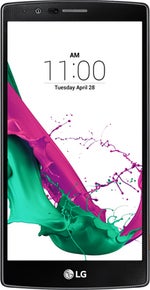
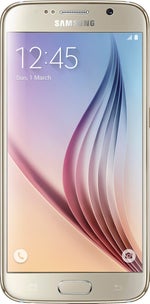
















![A new Android bug is making it impossible to install new apps. Are you affected? [UPDATE]](https://m-cdn.phonearena.com/images/article/176703-wide-two_350/A-new-Android-bug-is-making-it-impossible-to-install-new-apps.-Are-you-affected-UPDATE.webp)

Things that are NOT allowed:
To help keep our community safe and free from spam, we apply temporary limits to newly created accounts: